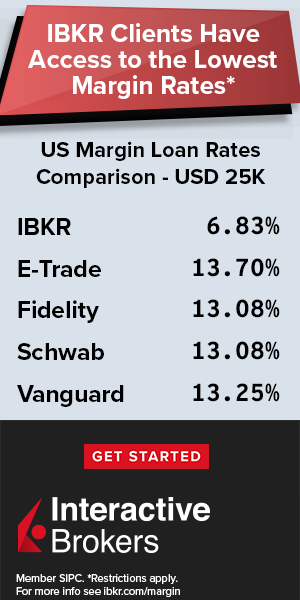Gather round and I will tell you a story; it all began in November 2019.

It is a story about a document published by an English Knight of the Realm (he’s also a very senior judge, but that’s less attention-grabbing) that is as significant as it is unknown. Perhaps it has stayed unknown because of its title: “The Legal Statement on cryptoassets and smart contracts (the “Statement”) – it’s hardly snappy. Maybe it remained unknown because at the time of publishing, the world of crypto was still in an embryonic state.
After all, November 2019 was before the relative boom in number of genuinely valuable cryptocurrencies and the 2021 NFT bull run, and comparatively an age before the word metaverse had been heard anywhere outside of niche chat rooms inhabited by software engineers.
It was a time when the cryptosphere was content to be the wild west and unregulated. However, the winds of change were already beginning to blow.
Many had already witnessed the meteoric rise of cryptocurrency (specifically Bitcoin) and the associated “fin-tech” industry, and had seen the eye-watering amounts of money involved in both. In 2019, various countries were racing to enact new legislation aimed at making themselves an attractive home to the early movers and shakers in the blockchain world.
However, the UK – as it so frequently does these days – took a different approach; one that few others have attempted.
On 18 November 2019, Sir Geoffrey Vos (the Chancellor of the English High Court) announced the launch of the Statement. It had been written, at his behest, by some of the finest and fastest legal minds in the UK. This was the UK’s big play to attract the attention of the crypto community.
Rather than rushing to draft and enact regulation that the quick pace of technological change could easily render obsolete, the UK banked on the flexibility of English common law and gave the strongest possible indication to its judiciary of how it should treat cryptoassets as and when legal questions arose.
How about a summary?
The aim of the Statement is summarised elegantly by its foreword in which Sir Geoffrey said:
“I hope that the [Statement] will go a long way towards providing much needed market confidence, legal certainty and predictability in areas that are of great importance to the technological and legal communities and to the global financial services industry… I am sure that it will demonstrate the ability of the common law in general, and English law in particular, to respond consistently and flexibly to new commercial mechanisms.”
… and it did!
The principle underlying this gambit was that the law must always lead regulation and that fundamental legal principles had to first be clarified before serious players and consumers alike could have the confidence to adopt the new crypto technology.
So, what impact did it have?
In the intervening two years since the Statement was published, the English legal system has continued to develop the law in this area at pace. We now have High Court decisions confirming the status of crypto as property. This sounds like a simple thing to demonstrate, right? Wrong. It is difficult to explain – in legal terms – how pieces of encrypted code constitute anything at all that should carry real world property rights. However, with the help of the Statement, and the support of the Judiciary, the English legal profession has done so. The Courts have issued more pivotal decisions on fundamental matters such as the proprietary rights of the owners of cryptoassets and even the tricky issue of the lex situs (the law governing the transfer of title) of cryptoassets.
Crucially for the crypto space, which currently still exists in relative frontier conditions, the English courts have also gone out of their way to assist the victims of fraud involving cryptocurrencies. They have frequently issued worldwide freezing orders and bankers trust orders. These require crypto-exchanges (based in overseas jurisdictions) to disclose information to victims to help them track down wrong-doers who seek to use the cryptography inherent in blockchain technology to evade identification by law enforcement.
Today in the UK we see significantly increased adoption of crypto and the Bank of England is slowly but surely making its way towards issuing a Digital Pound. My how the world has turned.
But where next?
Well, I have said that today’s cryptosphere is still, for the most part, lawless bandit country – but it won’t be for much longer. Already global authorities have identified state-sponsored, bad actors and known terrorist groups such as Hamas using crypto for their own purposes – perhaps most notably in the world of ransomware/RaaS. The first worldwide wave of regulation will clearly be in the realm of anti-money laundering.
This has been signalled loud and clear by most governments that take anti-money laundering seriously, and is most evident from the recent updated Guidance issued by the Financial Action Taskforce (the global money laundering and terrorist financing watchdog), which was published in October 2021.
However, we shouldn’t get ahead of ourselves. There are some thorny issues left to grapple with before the law can be in a sufficiently clear state to get us ready for sensible regulation in the crypto arena. Core internet-inherent questions persist. For example, legal determinations as to where cryptoassets are located at any given time, and whether anyone can truly have a “custody” relationship with an exchange or wallet-provider when we’re dealing with code on a distributed ledger.
Whilst it can be fairly said that the UK has led the way in relation to the key legal issues that have been established in the last two years, it appears that the USA is keen to take up the baton in 2022.
In November 2021 several American banking regulators (the Fed, the FDIC and the OCC) issued a statement making clear their intention was to provide legal and regulatory clarity around various issues of consumer-safety with an apparent focus on custody-related services and the so-called “stablecoins”.
What will the future look like?
Predictions are dangerous, especially when they are about the future – but what follows are my (unsolicited) predictions for where we will be in another two years.
The adoption of crypto will be on the verge of being truly mainstream, by which I mean used by all demographics across society.
The wholesale arrival of serious AML regulation into the cryptosphere is likely to have a seismic impact, creating a hard fork which significantly separates the legitimate and illegitimate users of crypto. Crypto exchanges and wallet holders will be regulated in much the same way as existing financial institutions, and they will not be permitted to accept transfers from or to wallets that are not held by regulated institutions. This is a blunt mechanism but is probably the quickest way to speed up the flushing of criminal money out of the system.
Recently, over a steaming cup of coffee in the cold and blustery City of London’s square mile, one of the co-authors of the Statement – an esteemed and expert barrister – asked me: “if we end up with a highly-regulated, parallel financial system, then what was the point?” He was right to ask that, but I imagine that the growing number of people all over the world who have already profited from their adventures in the cryptosphere probably won’t mind a bit. And I doubt we lawyers will either.


 Hot Features
Hot Features













